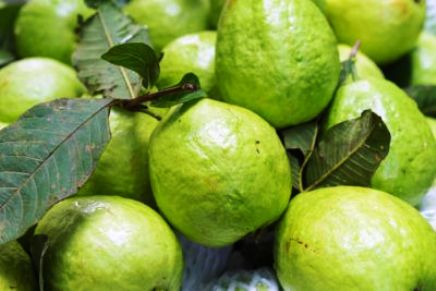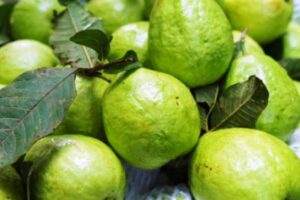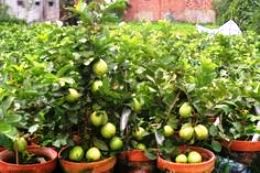Hello friends! Today I’ll give you the full information on growing such a fruit plant in a pot which is highly nutritious and full of taste, can be grown very easily in all kinds of soil and for easy availability to allit is also known as the apple of poors. Yes, friends, you are already familiar with this fruit plant. It is Guava in English, Amrud in Hindi, Payara in Bengali, Jamphal in Gujrati, and Peru in Marathi. However the scientific name of this plant is Psidium Guajavaand to the whole world, particularly in tropical and subtropical regions, it is cultivated commercially as a popular fruit plant. Friends, if you are planting Guava trees on the land, no particular care has to be taken, because Guava grows in all kinds of soil very easily and can tolerate drought conditions for quite a long duration. But, to grow Guava in a pot or container successfully, a lot of things have to be considered. Whatever be the size of the pot, it always has a limitation, and to get nutrition, the plant is always dependent on the potting mix made available by us. Therefore, to grow Guava in a pot, a special potting mix is required. So, in today’s video, I’ll make you familiar with all those aspects which are necessary to grow Guava in a pot. Selection of plant, size of the pot, growing conditions, preparing the potting mix, potting a plant, necessary care instructions, Use of fertilizer, techniques of preparing the plant for flowering and fruiting, diseases of the plants and their remedies are many aspects which I’ll discuss in detail. First of all, let me tell you about this plant. Though Guavas are available in many varieties, but according to me, for growing in a pot, the Thailand Guava variety, also called one Kg Guava is very much suitable. It’s a tropical variety of guava, very popular in South Asian countries, like Thailand, Indonesia, Taiwan, Malaysia, etc. The plant you are looking at now is a variety of Thailand Guava. Its fruit size is comparatively bigger. One mature fruit may weigh from 200 gms. to400 gms. The next specialty of its fruits to be very sweet and crispy. It contains a lot of ascorbic acids, seeds are soft and low in amount and the pulp is white in color and tasty. For these reasons, it’s high in demand in the international market. The third specialty of Thai Guava is the ability to produce fruits continuously and two times a yearThe first harvesting of the fruits is done in spring during March-April and the second harvesting is done in Monsoonduring July-August.
Pot size for guava plant:
In both seasons, the quality of fruits remains the same. I’ve also grown another variety of guava in a pot which is called Lalit. It’s a grafted plant. Its fruit weighs between 100 to 150 gms. and the pulp is pink in color. But in comparison to the rank, it’s lower than that of Thai Guava. So, friends, it was about the variety of the plant and you might’ve understood why I am recommending the Thai Guava variety for growing in a pot. The next important thing is that whenever you purchase a plant from a nursery, do confirm that the plant is either grown by air-layering method or grafting method. Actually, seed-grown plants not suitable for growing in a pot. The first thing is that the plant grown by seed will produce fruits like the parent plant is not guaranteed. The second thing is that a seed-grown plant may take 3 to 6 years to fruit. Whereas a grafted or air-layered plant starts producing fruits within one year. An air-layered plant has no taproot. They only have fibrous roots that don’t enter deep into the soil. That’s why, to grow in pots or containers, such plants are very suitable and for this reason, the plant has a tendency to spread around instead of gaining more height. Friends, you observe this plant. I have prepared it from the mother Thai guava plant air-layering method. Today I’ll show you how to re-pot it. When you purchase a plant from a nursery, you’ll find that to be of 1 to 1.5 feet height, the same as this plant. The difference is only that here you can see the roots of this plant, whereas a plant from a nursery is not like this. They have the roots covered with soil. Actually, I intentionally exposed the roots, so that to show you that this air-layered plant has no tap roots, but has only Auxillary fibrous roots. In the Indian climate, the most appropriate time to pot guava plants between February to March and June to August



